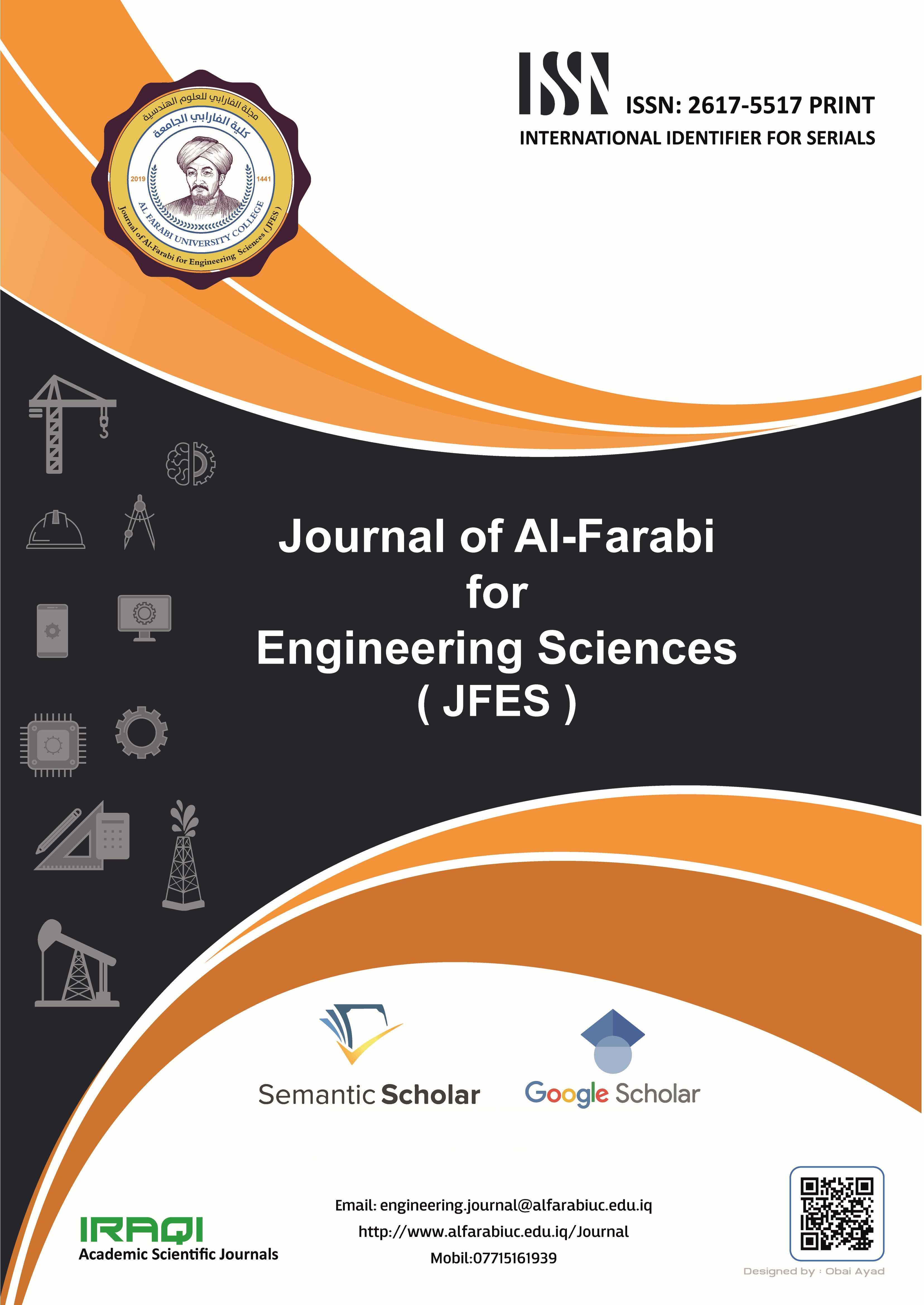Reconfigurable Antenna for sub-6 GHz and C band Applications
DOI:
https://doi.org/10.59746/jfes.v1i2.41Keywords:
Reconfigurable Antenna, sub-6 GHz, C band applicationsAbstract
The future of 5G New Radio (NR) development has many significant concerns. To overcome the working frequency band issue, a frequency-reconfigurable patch antenna based on pin diodes is presented and investigated. The antenna's compact dimensions (30 mm x 20 mm x 1.6 mm) are due to its construction on FR-4 substrate material with a relative permittivity of = 4.4. A feed port and two switches allow frequency reconfiguration in the antenna module. C-band service is provided by this antenna module's ability to switch between operating at 3.4 GHz, 4.8 GHz, and 7.5 GHz. Simulation of the proposed antenna is accomplished in the CST microwave studio. The presentation and discussion of the radiation pattern and S parameter demonstrate the feasibility of the proposed antenna. Antenna module's size and performance are both precisely appropriate.
References
S. Xiao, B.Z. Wang, and X.S. Yang, A novel frequency reconfigurable patch antenna, Microwave Opt Technol Lett 36 (2003), 295–297. DOI: https://doi.org/10.1002/mop.10746
F. Yang and Y. Rahmat-Samii, Patch antenna with switchable slot (PASS): Dual-frequency operation, Microwave Opt Technol Lett 31 (2001), 165–168. DOI: https://doi.org/10.1002/mop.1388
F. Yang and Y. Rahmat-Samii, Switchable dual-band circularly polarized patch antenna with single feed, Electronics Lett 37 (2001), 1002– 1003 DOI: https://doi.org/10.1049/el:20010695
M. Riitschlin, V. Sokol, “Reconfigurable antenna simulation, “IEEE Mirow. Mag., pp. 92-101, Dec. 2013. DOI: https://doi.org/10.1109/MMM.2013.2280331
S. Nikolaou, N.D. Kingsley, G.E. Ponchak, J. PApapolymerou, and M. M. Tentzeris, “UWB elliptical monopoles with reconfigurable band notch using MEMS switches actuated without bias lines,” IEEE Trans. Antennas Propag., vol. 57, no. 8, pp. 2242-2251, Aug. 2009. DOI: https://doi.org/10.1109/TAP.2009.2024450
E. Erdil, K. Topalli, M. Unlu, O.A. Civi, and T. Akin, “Frequency tunable patch antenna using RF MEMs technology,” IEEE Trans. Antennas Propag., vol. 55, no. 4, pp. 1193-1196, Apr. 2007. DOI: https://doi.org/10.1109/TAP.2007.893426
Bleicher, A. (2013, July). The 5G phone future. IEEE Spectr., 50(7), 15-16. DOI: https://doi.org/10.1109/MSPEC.2013.6545109
Ban, Y.-L., Chen, Z.-X., Chen, Z., Kang, K., & Li, J. L.-W. (2014). Decoupled closely spaced heptaband antenna array for WWAN/LTE smartphone applications. IEEE Antennas Wireless Propag. Lett, 13, 31– 34. 8. Xu, K.-D., Liao, S.-W., & Xue, Q. (2018). Wideband patch antenna using multiple parasitic patches and its array application with mutual coupling reduction. IEEE Access, 6, 42497-42505. DOI: https://doi.org/10.1109/LAWP.2013.2295623
Ding, C. F., Zhang, X. Y., Xue, C.-D., & Sim, C.-D. (2018, October). Novel pattern-diversity-based decoupling method and its application to multielement MIMO antenna. IEEE Trans. Antennas Propag., 66(10), 4976-4985. DOI: https://doi.org/10.1109/TAP.2018.2851380
Pan, B.-C., & Cui, T.-J. (2017, October). Broadband decoupling network for dual-band microstrip patch antennas. IEEE Trans. Antennas Propag., 65(10), 5595-5598. DOI: https://doi.org/10.1109/TAP.2017.2742539
Lian, R.-N., Tang, Z.-Y., & Yin, Y.-Z. (2018, January). Design of a broadband polarization-reconfigurable fabry–perot resonator antenna. IEEE Antennas and Wireless Propag., 17(1), 122-125. DOI: https://doi.org/10.1109/LAWP.2017.2777502
Nie, Z., Zhai, H., Liu, L., Li, J., Hu, D., & Shi, J. (2019, June). A dual-polarized frequency-reconfigurable low-profile antenna with harmonic suppression for 5G application. IEEE Antennas and Wireless Propa DOI: https://doi.org/10.1109/LAWP.2019.2913170




